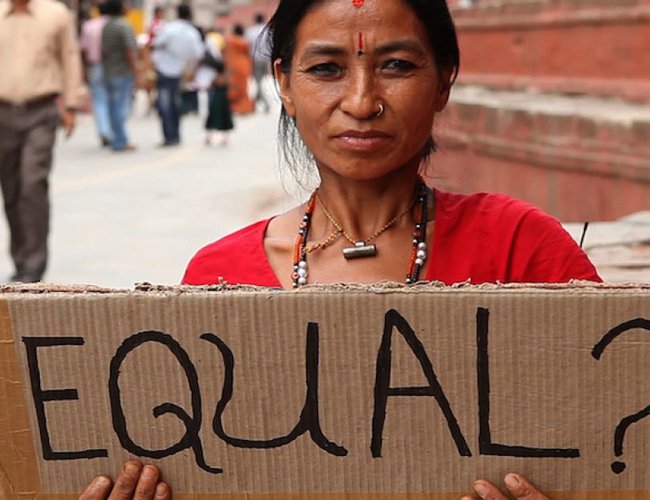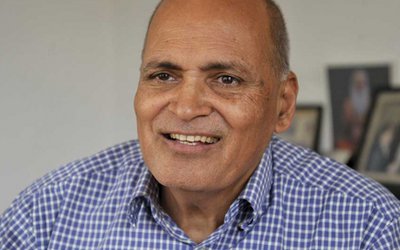
Feminism as a word denotes the political, social and economic equality of the sexes and despite this clearly stated definition; there is often a lack of clarity that is expressed. The word feminism came to me as a trendy expression during my school days when I mistook it as women empowerment. It was in college that I was properly introduced to the concept of feminism and the several narratives that surround it. As much as it felt nice calling oneself a feminist, I realized how important it is to understand its trajectory as well as the relevance it holds in different contexts. As my desire to understand feminism will go on, I also believe that my approach to it has largely been a personal one and further this article will reflect my own thoughts.
The idea of feminism evolved with each wave focused towards a new objective. First wave feminism aimed at opening up opportunities for women and recognizing the need for their participation in each sphere, the primary one being suffrage. The second wave was about the assertion of women’s agency and their fight against patriarchy. This phase marks women demanding equal pay and rights at the work place along with along with the efforts to erase the marks of sexism that prevails in the societies. The birth of third wave feminism is influenced largely but post colonial and post modern thoughts. This wave recognizes the difference between sex and gender, with gender as merely a performance rather than an identity. It denies the gender binary and is inclusive, advocating the rights of all possible sexes and in the process of fighting the labels that are demeaning towards females as it was done in the second wave, this phase also re- appropriates and celebrates them. There is an emergence of the fourth wave of feminism too which is more prevalent on social media and encompasses all the hash tag # movements.
We may have reached the fourth stage of feminism and there may be many more to come but I wonder what the real progress has been as most of these issues still prevail. An argument I find so futile with my friends is about how the word ‘feminism’ does not denote inclusion as is has a feminine connotation. Firstly being feminine does not necessarily mean ‘female’ as femininity is largely embraced by men too and secondly, yes it is about gender equality but aiming to change the name would to some extent mean denying the history and origin of the movement and that is not fair. Feminism in Nepal has been influenced by the global movement, with many organizations supporting the ideology and while these institutions have been able to make some remarkable changes, I believe our first step towards feminism needs to be taken within our own households. As much as we have progressed into accepting the little changes in gender roles we still have very rigid expectations of how a man or a woman should be. Patriarchy exists and one of the most disappointing aspects of it is, women reinforcing it and accepting their subordinate position. Feminism doesn’t involve hating men but it requires the genders to accept an equal position despite the differences in our physical abilities. For the daughters, rather than taking pride in calling ourselves ‘the son our parents never had’ we should change it to ‘the daughter our parents always wanted’. It may seem unnecessary to make these little changes but there are people out there who need the spark of feminism much more than we do as the gender stereotypes are very challenging. Most of us still experience the menstruation taboo in our own homes and its unfortunate that sometimes we even choose to adhere to it. Feminism does not limit itself to the gender binary rather it accepts the existence of multiple genders and paves way towards the absence of heteronormativity.
A recent news article spoke about an Indian athlete being banned from the Asian Games because the authorities felt she was too ‘masculine’ and her natural testosterone level were higher than stated in the guidelines. She was unaware about the gender test she was asked to undergo and as diagnosed with hyperandrogenism, she was subjected to humiliation. This kind of guidelines is discriminatory and problematic as they trigger the gender stereotypes making the sports arena less accessible for genders other than male. There are several examples like these and some go unnoticed because it’s become so normal to live amidst these stereotypes. However, I urge all of us to start small; first by understanding the meaning of feminism and the need for it as it is a basic human right to be able to live the way one chooses to be.

Shreya Gyawali
Gyawali is a student
- Could Nepal Be The Next Technology Destination? A Conversation With Karvika Thapa, CEO Kimbu Tech
- Sep 02, 2021
- Remembering The Great Nationalist Leader: Kriti Nidhi Bista
- Dec 08, 2018
- Nora Raymond: The Journey Upto 97 Years And More!
- Jul 21, 2018
- Socially Constructed Identities
- May 25, 2018
- Anthropology Today
- Mar 09, 2018
















